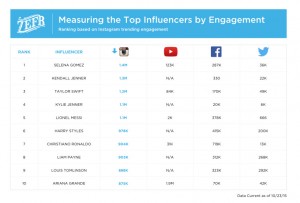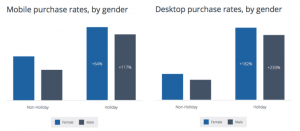The bookseller has boosted its BOPIS and curbside pick-up options.
Josh Zelman, Senior Director, Customer Experience at the familiar high street bookstore chain Barnes & Noble took the virtual stage at Movable Ink’s recent (Re)Think conference to explain how the brand is leveraging technology to strike a critical balance between in-store, online, BOPIS and curbside pick-up experiences.
Starting in his position about a year ago, Zelman originally expected to take responsibility for email marketing and CRM. “In pretty short order, several other areas were consolidated under me,” he told us, “including social, membership and creative — for the overall company, not just for the social channel.”
BOPIS versus mail delivery
Barnes & Noble has long had an e-commerce website where books could be ordered for mail delivery as well as for pick-up in store. With the pandemic came a huge shift in customer behavior, Zelman said, away from brick and mortar to shopping online but retrieving in store. We asked why customers didn’t simply order mail delivery.
“At the onset of the pandemic, mail delivery was affected,” said Zelman. We augmented most of our service emails, which had typically just instructed customers that their order has been received or shipped, to essentially give ourselves breathing room with regard to delivery times. There was an increase in overall dot com traffic and order volume, and that had a ripple effect on our delivery ability. We had complications from distribution centers as well, trying to navigate new social distancing measures while simultaneously starting to see volumes that were nearing typical holiday-like volume. That all became complicated to handle.”
The initial reaction was to introduce the concept of curbside pick-up for the first time, with many stores forced to shutter in any case under state regulations. “We had the benefit of working out the logistics of curbside pick-up, how that would work, getting customer-facing information available, prior to actually having stores open again.” The re-openings came with such limits on in-store traffic, Zelman said, that curbside pick-up and BOPIS remained attractive options.
A successful strategy
On its introduction in 2018, BOPIS accounted for about 23% of orders, dropping to 20% in 2019. With the pandemic, Barnes & Noble saw BOPIS sales increase by almost 230% (compared with january and February this year), and is projecting a 109% growth YOY in November and December — and that’s without a COVID resurgence.
Dynamic messaging
In order to help customers embrace BOPIS more fully, as well as curbside pick-up, Barnes & Noble leveraged Movable Ink’s dynamic messaging software. Developed initially for email, the solution creates messages which render with up-to-date information at time of opening or viewing.
In emails, the brand’s main communications channel, the Dynamic Store Locator module powered by Movable Ink, which leverages geo-location data, now shows not only store location and opening hours, but showcases whether the store is currently opening for business and whether BOPIS and curbside pick-up are offered. The e-commerce site was updated to more prominently highlight BOPIS and curbside, and the options began to be featured in search promo results.
In addition to an instruction page, a visual demonstration of curbside pick-up was offered on the site, and in-store signage to help customers was developed using creative consistent with the email and web messaging.
Bracing for the winter
“As we brace for the holidays, there’s a few factors in play,” said Zelman. “One, the customer’s comfort level with coming back into a store, coupled with the rise in COVID cases which could again lead to tight restrictions on numbers of people in stores, or stores not being able to allow customers inside.”
Movable Ink’s founder and CEO Vivek Sharma spoke to us from the terrace of his New York apartment on one of the last warm days of the season. “Josh has been a long time customer and partner with Movable Ink, and he’s on our customer advisory board. BOPIS is something everyone’s talking about this year — BOPIS and QR codes.”
Sharma reflected on what the pandemic has meant for marketers, against a broader social backdrop. “We have a big election coming up, and we are working with the DNC and have had an impact on their success in this election cycle. There’s the specter of COVID over the course of the winter that is going to change things, and I’m sure the shopping behaviors and marketing behaviors we saw in early summer, you’re going to see a lot more of that.”
Sharma also had advice for brands that had not over-invested in e-commerce and digital marketing. “For the smart marketers, you can’t wait any longer. Now it’s the bookend moment: you’re on the late side if you’re not making these things a priority. You can’t live off your bricks and mortar strategy, and the bricks and mortar strategy needs to have digital layered into it to augment it — as you’re seeing with things like BOPIS.”
The recipe for success? “Maybe get a customer data platform to make sure everything is centralized, have a great message delivery engine — an ESP or a marketing cloud — and have a really great creative personalization technology that can take that data, ingest it, turn it into personalized creative, and send it out through any channel you’re engaging your customer in.”
This story first appeared on MarTech Today.
Marketing Land – Internet Marketing News, Strategies & Tips
(5)







